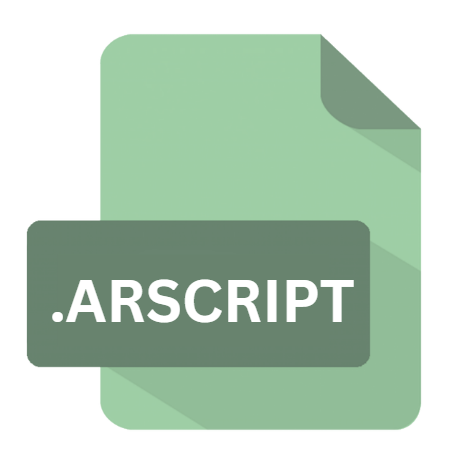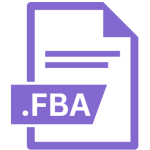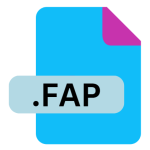.ARSCRIPT File Extension

ArtRage Script
| Developer | Ambient Design |
| Popularity | |
| Category | Executable Files |
| Format | .ARSCRIPT |
| Cross Platform | Update Soon |
What is an ARSCRIPT file?
The .ARSCRIPT file extension is associated with ArtRage, a digital painting software known for its realistic simulation of traditional art tools.
An .ARSCRIPT file is a script file used within ArtRage to automate tasks or record a series of actions performed by the user.
These scripts can enhance productivity by allowing users to repeat complex sequences of actions with a single command, thus making digital artwork creation more efficient and streamlined.
More Information.
ArtRage was first released in 2004, and it quickly gained popularity among digital artists for its intuitive interface and realistic rendering of art materials.
The introduction of .ARSCRIPT files came as a significant enhancement, allowing users to record and automate their painting processes.
The primary purpose of .ARSCRIPT files is to save a series of actions, which can be replayed to reproduce the same results.
This is particularly useful for artists who want to create tutorials, replicate specific techniques, or ensure consistency in their artwork.
Over time, the .ARSCRIPT format has become an integral part of ArtRage, supporting various versions of the software and enhancing the user experience by reducing the time and effort required to perform repetitive tasks.
Origin Of This File.
The .ARSCRIPT file extension originates from ArtRage, a software developed by Ambient Design. ArtRage is a popular digital painting tool that mimics traditional media such as oils, watercolors, and pencils.
The software has evolved over the years, and the .ARSCRIPT file format was introduced as part of its feature set to cater to users who seek to automate repetitive tasks and streamline their creative workflows.
File Structure Technical Specification.
The .ARSCRIPT file is a text-based file that contains a series of commands and parameters used by ArtRage to execute specific actions.
The file is structured in a way that each line typically represents a single command or action. These commands can include brush strokes, layer manipulations, color adjustments, and more.
- File Extension: .ARSCRIPT
- Format: Text-based script
- Structure: Contains a sequence of commands and parameters
- Technical Specifications: The commands within an .ARSCRIPT file are designed to interact with the ArtRage application, and their syntax is specific to the version of ArtRage in use. The file does not contain binary data but instead relies on textual instructions that ArtRage interprets.
How to Convert the File?
The .ARSCRIPT file is designed to work specifically with ArtRage and does not have a direct conversion format to other file types.
If you need to share or use the script in another context, you might consider the following approaches:
- Exporting as a Text File: Since .ARSCRIPT files are text-based, you can open them with a text editor (such as Notepad or Sublime Text) and save them in a different text format if needed.
- Manual Recreation: If you need to use the script’s functionality in a different application, you might manually recreate the actions or commands using the scripting capabilities of that application.
Advantages And Disadvantages.
Advantages:
- Automation: .ARSCRIPT files automate repetitive tasks, saving time and effort for artists who need to perform the same actions frequently.
- Consistency: By using scripts, artists can ensure that their actions are consistent across different projects, which is especially useful for maintaining uniformity in tutorials or series of artworks.
- Efficiency: Scripts can speed up the workflow by executing complex sequences of actions quickly, allowing artists to focus more on creativity rather than repetitive tasks.
- Customization: Users can create and modify their own scripts to tailor the automation to their specific needs and preferences.
Disadvantages:
- Compatibility: .ARSCRIPT files are specific to ArtRage and may not be compatible with other software, limiting their use outside the ArtRage ecosystem.
- Complexity: Writing or modifying scripts requires some understanding of the scripting language and the commands used by ArtRage, which might be challenging for users who are not familiar with scripting.
- Errors: Incorrectly written scripts can cause errors or unexpected behavior within ArtRage, potentially disrupting the workflow.
How to Open ARSCRIPT?
Open In Windows
- Using ArtRage: The primary method to open and use .ARSCRIPT files is through ArtRage. Open ArtRage, navigate to the “Script” menu, and select “Load Script” to open and execute the .ARSCRIPT file.
- Text Editors: For viewing or editing, you can open .ARSCRIPT files with any text editor, such as Notepad or Visual Studio Code. However, this will not execute the script within ArtRage.
Open In Linux
- Using ArtRage: ArtRage is not natively supported on Linux, so opening and executing .ARSCRIPT files requires running ArtRage through compatibility layers like Wine or a virtual machine.
- Text Editors: .ARSCRIPT files can be viewed or edited with text editors available on Linux, such as Gedit or Vim. As with other systems, the script will not execute without ArtRage.
Open In MAC
- Using ArtRage: Similar to Windows, you can open and execute .ARSCRIPT files using ArtRage on Mac OS. Open ArtRage, go to the “Script” menu, and choose “Load Script.”
- Text Editors: On Mac OS, you can use text editors like TextEdit or Sublime Text to view or edit .ARSCRIPT files. The file will not run as a script outside of ArtRage.













